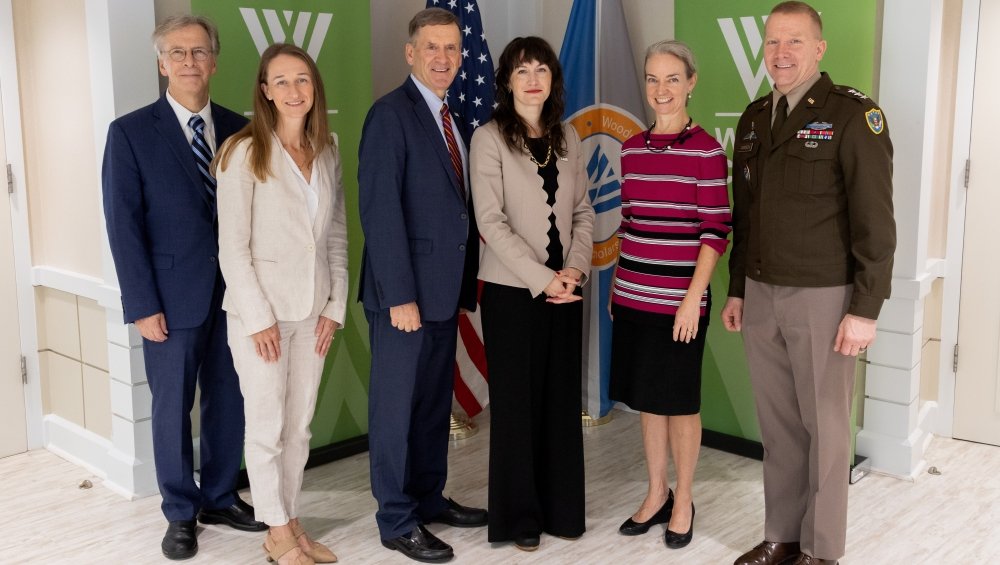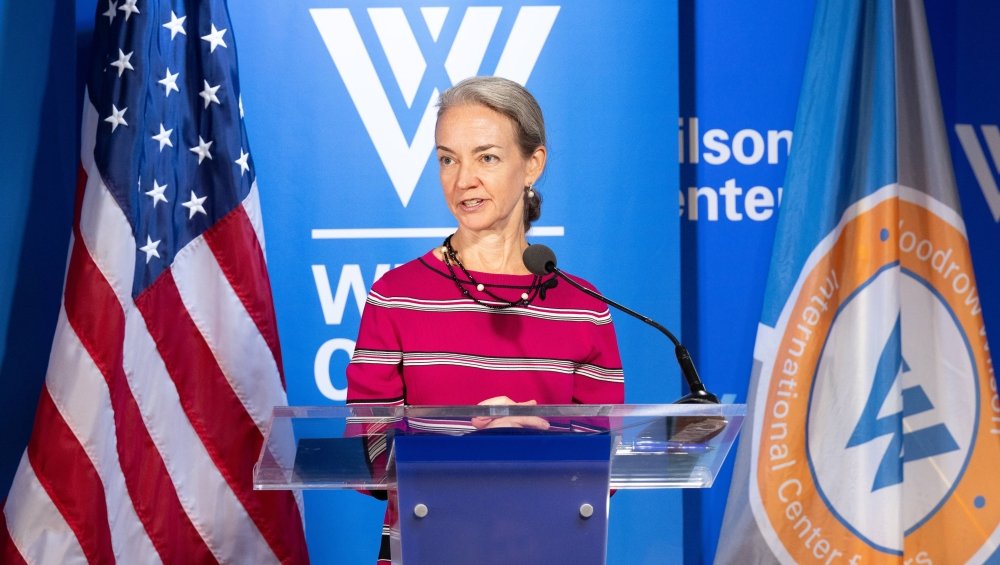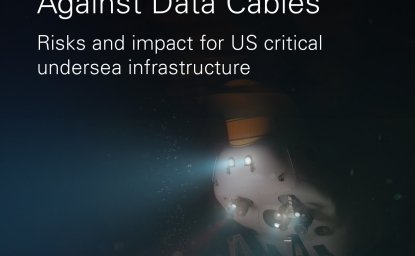
A blog of the Polar Institute
The US Department of Defense released a new Arctic Strategy on July 22. The next day, senior leaders stopped by the Wilson Center to talk about the new strategy and evolving conditions in the Arctic. Amanda Dory, Acting Under Secretary of Defense for Policy, delivered a comprehensive overview of the new strategy and its three main lines of effort: enhancing domain awareness and capabilities to campaign in the Arctic, engaging with allies and partners, and exercising a calibrated presence in the region.
Since the release of the previous DOD Arctic Strategy in 2019, the Arctic region has continued to evolve in the face of climate change and shifting geopolitical dynamics. The new strategy points to a “new, more dynamic Arctic security environment” due to the confluence of Russian and Chinese/PRC activities (as well as their collaboration), accelerating effects of climate change, and NATO enlargement.
At the Wilson Center, Iris Feguson (Deputy Assistant Secretary of Defense for Arctic and Global Resilience) offered valuable insights into the development process of the new strategy, the complexities of coordinating among overlapping combatant commands, and the importance of aligning their efforts in the Arctic. She also highlighted the unclassified nature of the strategy and detailed characterization of regional threats as a deliberate choice, to ensure the American public and international partners have a clear understanding of US objectives in the Arctic.
As Ms. Dory noted in her remarks, “Working with our allies and partners underpins the whole document, is fundamental to our approach in the Arctic, and beyond,” and the audience from ten different embassies, industry, and various federal agencies at the event underscored that sentiment.
In a panel discussion, Major-General Odd-Harald Hagen of the Royal Norwegian Embassy joined LTG Tom Carden,Major General Ben Maitre, and DASD Ferguson to consider the operational implications of the new strategy and the critical importance of collaborative efforts with like-minded partners to address shared challenges and emerging threats. Norway is a key US partner in the Arctic, and US-Norway defense collaboration is strong, as evidenced by robust US exercises and operations in Norway already in 2024.
The new Arctic Strategy underlines the importance of improving C5ISR in the Arctic—command, control, communications, computers, cyber, intelligence, surveillance, and reconnaissance—the suite of capabilities that enable monitoring, assessment, and interdiction of threats to North America. Improved sensors, as well as data fusion and information sharing structures, are critical to the monitor and respond posture DOD has affirmed it will sustain in the Arctic.
Both Ferguson and Dory reiterated the need to modernize and bolster the US's operational capabilities and situational awareness in the High North, which involves investing in advanced technology and improving observation capacity (such as NORAD) to better understand and respond to threats in the region—part of the “monitor-and-respond" approach to the Arctic. This approach aims to balance deterrence with stability, ensuring that US forces are prepared and positioned effectively without escalating tensions.
What next for the DOD Arctic Strategy? Looking ahead, the focus will be on turning strategic priorities into action. Effective implementation will hinge on seamless coordination across the joint force, interagency, and international partners. Engaging with local communities and Alaskan Natives will also be crucial to operational success.
It is safe to assume that the unclassified strategy will have classified cousins—perhaps a classified annex or implementation plan. With the DOD’s objective of maintaining Arctic stability and Homeland Defense, watching the investment and innovation space for key signals of implementation intent may be illuminating.
How the US navigates and executes this strategy will ultimately determine its influence and security in the rapidly shifting Arctic.
Many thanks to the Wilson Center’s Global Europe Program, Canada Institute, and Environmental Change and Security Program for their support of this event.
The DOD's New Arctic Strategy: An In-Depth Discussion
Author


Polar Institute
Since its inception in 2017, the Polar Institute has become a premier forum for discussion and policy analysis of Arctic and Antarctic issues, and is known in Washington, DC and elsewhere as the Arctic Public Square. The Institute holistically studies the central policy issues facing these regions—with an emphasis on Arctic governance, climate change, economic development, scientific research, security, and Indigenous communities—and communicates trusted analysis to policymakers and other stakeholders. Read more

















